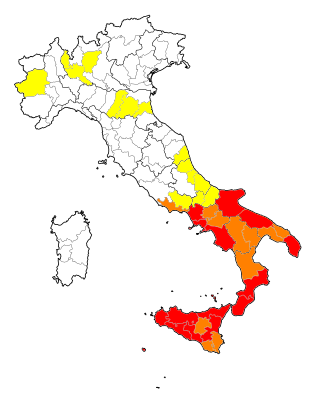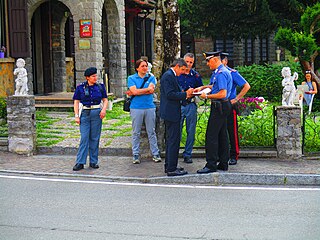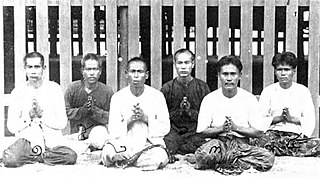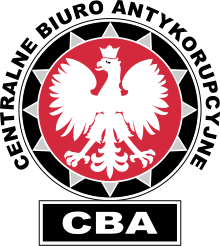
Organized crime or organised crime is a category of transnational, national, or local group of centralized enterprises run to engage in illegal activity, most commonly for profit. While organized crime is generally thought of as a form of illegal business, some criminal organizations, such as terrorist groups, rebel forces, and separatists, are politically motivated. Many criminal organizations rely on fear or terror to achieve their goals or aims as well as to maintain control within the organization and may adopt tactics commonly used by authoritarian regimes to maintain power. Some forms of organized crime simply exist to cater towards demand of illegal goods in a state or to facilitate trade of goods and services that may have been banned by a state. Sometimes, criminal organizations force people to do business with them, such as when a gang extorts protection money from shopkeepers. Street gangs may often be deemed organized crime groups or, under stricter definitions of organized crime, may become disciplined enough to be considered organized. A criminal organization can also be referred to as an outfit, a gang, crime family, mafia, mob, (crime) ring, or syndicate; the network, subculture, and community of criminals involved in organized crime may be referred to as the underworld or gangland. Sociologists sometimes specifically distinguish a "mafia" as a type of organized crime group that specializes in the supply of extra-legal protection and quasi-law enforcement. Academic studies of the original "Mafia", the Italian Mafia generated an economic study of organized crime groups and exerted great influence on studies of the Russian mafia, the Chinese triads, the Hong Kong triads, and the Japanese yakuza.

Criminal organizations have been prevalent in Italy, especially in the southern part of the country, for centuries and have affected the social and economic life of many Italian regions since at least the 19th century. There are six major native mafia-like organizations that are heavily active in Italy. The oldest and most powerful of these organizations, having begun to develop between 1500 and 1800, are the 'Ndrangheta from Calabria, the Cosa Nostra from Sicily, and the Camorra based in Campania. In addition to these three long-established organizations, there are also three other significantly active organized crime syndicates in Italy that were founded in the 20th century: the Stidda of Sicily and the Sacra Corona Unita and Società foggiana, both from Apulia.
Albanian mafia or Albanian organized crime are the general terms used for criminal organizations based in Albania or composed of ethnic Albanians. Albanian organized crime is active in Europe, North America, South America, and various other parts of the world including the Middle East and Asia. The Albanian Mafia participates in a diverse range of criminal enterprises including trafficking in drugs, arms, and humans. Thanks to their close ties with the 'Ndrangheta of Calabria, they control a large part of the billion dollar wholesale cocaine market in Europe and appear to be the primary distributors of cocaine in various European drug hubs including London. Albanian organized crime is characterized by diversified criminal enterprises which, in their complexity, demonstrate a very high criminal capacity. In Albania, there are over 15 mafia families that control organized crime. According to some sources, Albania is the first European narco state.
The East Harlem Purple Gang was a gang or organized crime group consisting of Italian-American hit-men and heroin dealers who were semi-independent from the Italian-American Mafia and, according to federal prosecutors, dominated heroin distribution in East Harlem, Italian Harlem, and the Bronx during the 1970s and early 1980s in New York City. Though mostly independent of the Italian-American Mafia and not an official Mafia crew, the gang was originally affiliated with and worked with the Lucchese crime family and later with the Bonanno crime family and Genovese crime family. It developed its "closest ties" with the Genovese family, and its remnants or former members are now part of the Genovese family's 116th Street Crew.

Crime rates in Portugal are generally low, and most crimes are non-violent. Portugal's security and peace indicators compare favourably to those of other countries; According to the Institute for Economics and Peace's 2022 Global Peace Index report, Portugal ranks as the 6th most peaceful country in the world.

Italian crime rates, though low compared to other developed countries, are present in various forms throughout the nation. Violent crimes, which include instances of murder, sexual violence, and assault, are quite rare in Italy evidenced by its homicide rate of 0.51 in 2021, the lowest in Europe aside from Luxembourg and Slovenia. However, Italy is notorious for its organized crime groups, which are present worldwide and collectively referred to as the Mafia. This has made financial crimes such as corruption, theft, and trafficking more widespread in the country.

Crime in Russia refers to the multivalent issues of organized crime, extensive political and police corruption, and all aspects of criminality at play in Russia. Violent crime in Siberia is much more apparent than in Western Russia.

Crime in Nigeria is investigated by the Nigerian Police. Nigeria is considered to be a country with a high level of crime, ranking 17th among the least peaceful countries in the world. During the first half of 2022, almost 6,000 people were killed by jihadists, kidnappers, bandits or the Nigerian army.

Slovakia is a Central European country with a history of relatively low crime. While crime became more widespread after the Revolutions of 1989, it remains low when compared to many other post-communist countries.

Crime in Serbia includes murder, organised crime, corruption, piracy, false bomb threats and mass shootings among others. It is combated by the Serbian police and other government agencies.

Crime in Montenegro is combated by the Montenegro Police and other agencies.

Crime in Bulgaria is combated by the Bulgarian police and other agencies. The UK Government ranks Bulgaria as a low crime area and crime there has significantly decreased in recent years.

Crime in Greece is combated by the Hellenic Police and other agencies.
Crime in Denmark is combated by the Danish Police and other agencies.
Although organized crime has always existed in Sweden, it has risen significantly in the 2000s. The number of organized criminal groups operating in the country continues to rise. In 2018, Sweden had the highest gun deaths in total across Europe, and deaths involving guns tripled in Sweden between 2012 and 2020.

A triad is a Chinese transnational organized crime syndicate based in Greater China with outposts in various countries having significant Chinese diaspora populations.
British firms are organised crime groups originating in the United Kingdom.

Crime in Latvia is relatively low, by global standards, especially compared to previous years, when it was named the "crime capital of Europe" by Forbes in 2008. The homicide rate in Latvia was 4.9 per 100,000 people in 2020, a sharp drop from 10 cases per 100,000 people in 2000, and has been steadily decreasing, but has seen recent increases. The United States Department of State has assessed Latvia's security rating as "medium", with a moderate crime rate. In recent times, crime has been increasing, particularly due to many Latvians stranded because of the COVID-19 pandemic returning to Latvia and choosing to commit crime. According to Interpol, Latvia is considered an attractive place for regional and organized criminals involved in drug trafficking, arms trafficking, human trafficking, or smuggling. According to the Central Statistical Bureau of Latvia, a third of all women in Latvia have suffered some form of sexual violence or rape while men are subjected to violence outside the family.

The Pruszków Mafia was a Polish criminal organization originating from Pruszków in the 1990s and one of the most infamous in the country's modern history. It was active in the vicinity of the city of Warsaw. The group is known for being involved in large car-theft rings, drug trafficking, kidnapping, extortion, weapon trafficking and murder. Even though law enforcement dealt a severe blow to the organization in 2000 with Jarosław "Masa" Sokołowski taking the stance of crown witness, it is alleged that Pruszków-based gangs, with or without notice from their former leaders, have regained their strength in recent years and have begun restoring their car-theft rings and connections with Colombian drug cartels.


















